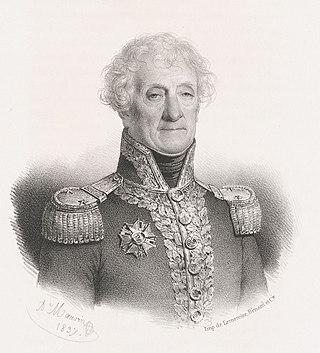
The maritime European exploration of Australia consisted of several waves of European seafarers who sailed the edges of the Australian continent. Dutch navigators were the first Europeans known to have explored and mapped the Australian coastline. The first documented encounter was that of Dutch navigator Willem Janszoon, in 1606. Dutch seafarers also visited the west and north coasts of the continent, as did French explorers.

Jacob Le Maire was a Dutch mariner who circumnavigated the earth in 1615 and 1616. The strait between Tierra del Fuego and Isla de los Estados was named the Le Maire Strait in his honour, though not without controversy. It was Le Maire himself who proposed to the council aboard Eendracht that the new passage should be called by his name and the council unanimously agreed with Le Maire. The author or authors of The Relation took Eendracht captain Willem Schouten's side by proclaiming:

Dirk Hartog was a 17th-century Dutch sailor and explorer. Dirk Hartog's expedition was the second European group to land in Australia and the first to leave behind an artefact to record his visit, the Hartog Plate. His name is sometimes alternatively spelled Dirck Hartog or Dierick Hartochszch. Ernest Giles referred to him as Theodoric Hartog. The Western Australian island Dirk Hartog Island is named after Hartog.

Dirk Hartog Island is an island off the Gascoyne coast of Western Australia, within the Shark Bay World Heritage Area. It is about 80 kilometres long and between 3 and 15 kilometres wide and is Western Australia's largest and most western island. It covers an area of 620 square kilometres and is approximately 850 kilometres north of Perth.
The human history of Western Australia commenced between 40,000 and 60,000 years ago with the arrival of Aboriginal Australians on the northwest coast. The first inhabitants expanded across the east and south of the continent.

Willem Hesselsz de Vlamingh was a Dutch sea captain who explored the central west coast of New Holland (Australia) in the late 17th century, where he landed in what is now Perth on the Swan River. The mission proved fruitless, but he charted parts of the continent's western coast.

Louis Claude de Saulces de Freycinet was a French Navy officer. He circumnavigated the earth, and in 1811 published the first map to show a full outline of the coastline of Australia.

Willem Cornelisz Schouten was a Dutch navigator for the Dutch East India Company. He was the first to sail the Cape Horn route to the Pacific Ocean.

Shark Bay is a World Heritage Site in the Gascoyne region of Western Australia. The 23,000-square-kilometre (8,900 sq mi) area is located approximately 800 kilometres (500 mi) north of Perth, on the westernmost point of the Australian continent. UNESCO's official listing of Shark Bay as a World Heritage Site reads:

Denham is the administrative town for the Shire of Shark Bay, Western Australia. At the 2016 census, Denham had a population of 754. Located on the western coast of the Peron Peninsula 831 kilometres (516 mi) north of Perth, Denham is the westernmost publicly accessible town in Australia, and is named in honour of Captain Henry Mangles Denham of the Royal Navy, who charted Shark Bay in 1858. Today, Denham survives as the gateway for the tourists who come to see the dolphins at Monkey Mia, which is located 23 kilometres (14 mi) northeast of the town. The town also has an attractive beach and a jetty popular with those interested in fishing and boating.
The Eendracht was an early 17th century Dutch wooden-hulled 700 tonne East Indiaman, launched in 1615 in the service of the Dutch East India Company (VOC). Its Dutch name means "concord", "unity" or "union", and was a common name given to Dutch ships of the period, from the motto of the Republic: Concordia res parvae crescunt . The ship was captained by Dirk Hartog when he made the second recorded landfall by a European on Australian soil, in 1616.
Ridderschap van Holland was a large retourschip, the largest class of merchantmen built by the Dutch East India Company to trade with the East Indies. In 1694 the ship sailed for Batavia on her fifth voyage, but was never heard from again. She is now thought to have been shipwrecked off the west coast of Australia.

Eendrachtsland or Eendraghtsland is an obsolete geographical name for an area centred on the Gascoyne region of Western Australia. Between 1616 and 1644, during the European age of exploration, Eendraghtsland was also a name for the entire Australian mainland. From 1644, it and the surrounding areas were known as New Holland.

Baron Jacques Félix Emmanuel Hamelin was a rear admiral of the French navy and later a Baron. He commanded numerous naval expeditions and battles with the Royal Navy as well as exploratory voyages in the Indian Ocean and the South Seas.
Joan Geelvinck was a Dutch merchant and politician who followed his father Cornelis and younger brother Albert on the city council of Amsterdam.

Caert van't Landt van d'Eendracht is a 1627 map by Hessel Gerritsz. One of the earliest maps of Australia, it shows what little was then known of the west coast, based on a number of voyages beginning with the 1616 voyage of Dirk Hartog, when he named Eendrachtsland after his ship.

Australia on the Map is the history and heritage division of the Australasian Hydrographic Society. It seeks to enhance Australians’ knowledge, understanding and appreciation of the nation's early history, beginning in 1606 with the voyages of Willem Janszoon in the Duyfken and Luis Váez de Torres in Los Tres Reyes and San Pedro, and continuing to the present.

The Mauritius was an early 17th century Dutch wooden-hulled sailing ship, documented as being in service to the Dutch East India Company between 1618 and 1622.

Edel Land National Park is a proposed national park located in the Gascoyne Region of Western Australia, located 670 kilometres (420 mi) north of the state's capital Perth.















